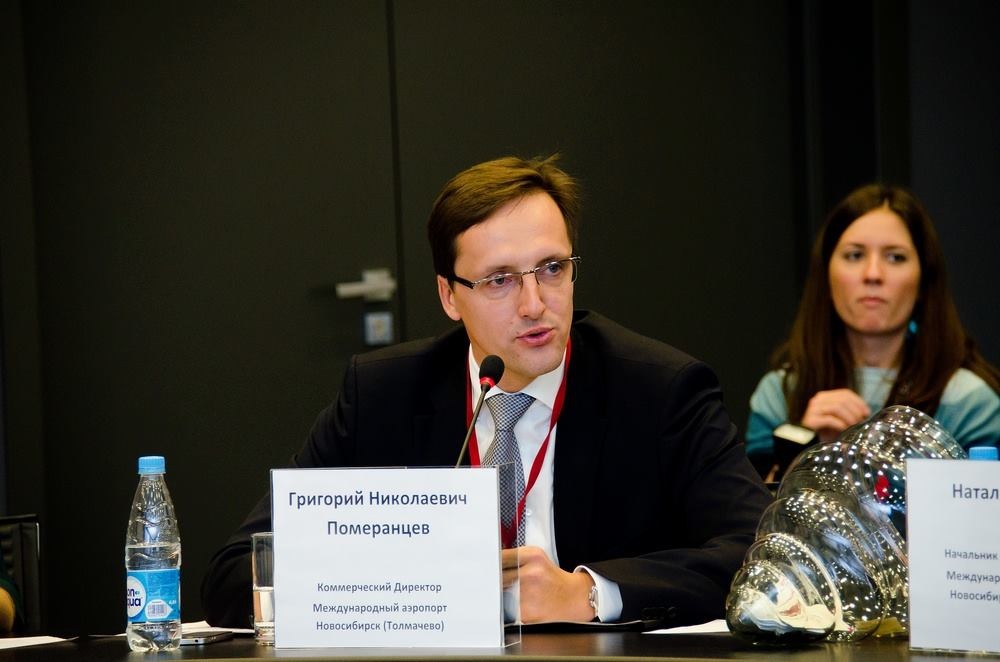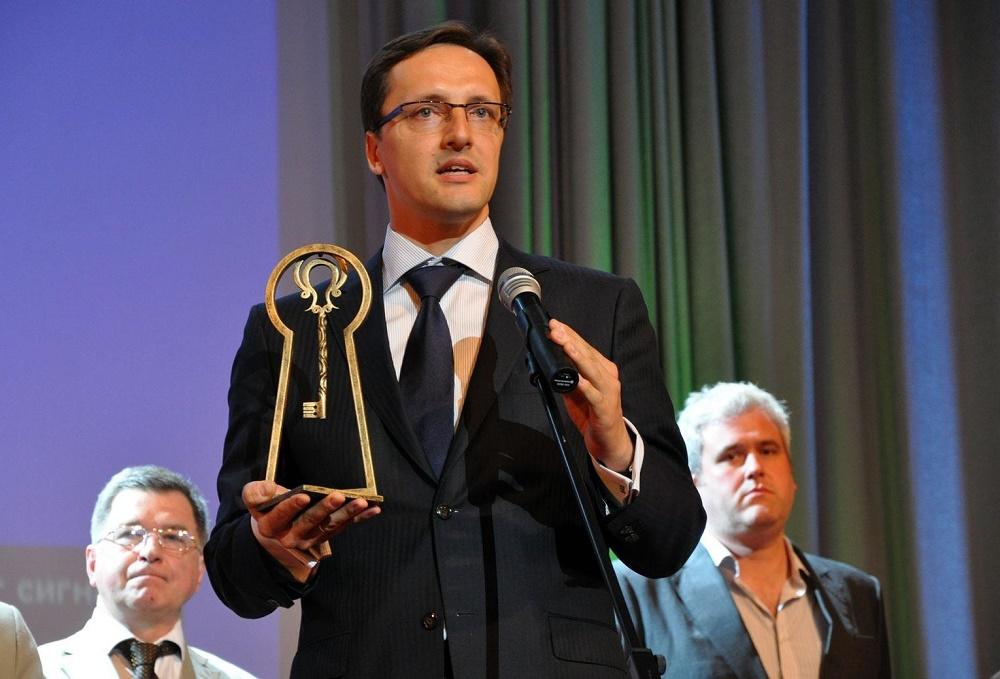Gregory Pomerantsev in this interview discusses the role of place branding in commercial aviation and travel, how airports are becoming destinations in their own right, and to what extent country-of-origin matters for the decision where to open new routes. Gregory Pomerantsev also shares his thoughts on the country brand(ing) of Belarus, the Baltics, and Scandinavia.
Learn about:
- The role of place branding in aviation and travel;
- The massive destination branding opportunities offered by airports and hubs;
- How airBaltic gave prominence to the Baltic states in Eastern Europe;
- The importance of city brands for the decision of airlines to open new routes;
- Good practice examples of smart cooperation between place brand stakeholders;
- How destination marketing differs from destination branding;
- Country branding advice for Belarus;
- How the country-of-origin effect influences the aviation business.
Gregory, your primary occupation is with aviation and travel. Does place branding play a role in this context? Where are the synergies?
Place branding and commercial aviation go hand in hand. Both place branding and the branding of an airline or an airport pursue the goal of managing reputation, building name awareness and creating distinctive, trustworthy, authentic and memorable images.
Despite many unique innovative and premium airline or airport products, getting onboard an airplane is not really a goal in itself for most people, but rather a necessity to get to a desired destination. In many cases, especially when it comes to pure touristic routes, promoting an airline product means literally selling a destination.
Since de-regulation of the airline market in Europe and some other parts of the world took place, competition among airlines has been increasingly growing, thus generating demand and propensity to fly. Very quickly airlines realized that you no longer can achieve success alone, and that cooperation with major stakeholders in all destinations of your route network is essential to make flight operations profitable.
As a result we see lots of examples where airlines successfully build and promote their brands by using successful brands of popular places they fly to. On the other hand, many regions and cities take advantage of their base airline (or foreign carriers landing in their local airport) to highlight their presence on the world map. Air Mauritius, Alaska Airlines, Air New Zealand, Norwegian, Icelandair are just a few examples of destination-airline brand synergies where “one hand washes the other,” for the benefits of both.
Airports as well add to this synergistic effect of place branding, aviation and travel. When conceived not just as departure and arrival aerodromes but as major aviation transfer hubs, airports can generate new and additional passenger traffic.
Travelers start using such hubs as connecting points between transfer flights, not really as a final destination. Here come lots of opportunities for a city, region or country served by this air hub to build up and promote their brands.
Despite its comparatively small population of 5.3 million, Singapore gets exposed to over 50 million air travelers per year, thanks to its Changi airport – the leader transfer hub in the region. The city of Frankfurt (680 thousand inhabitants) enjoys similar advantages thanks to its airport which serves over 60 million passengers per year.
With full respect and admiration for Dubai, it would not have become as popular and desired worldwide without developing itself as a transfer air hub serving around 80 million passengers annually.
You were Senior Vice President of Sales & Marketing for airBaltic, the Latvian national airline, at the same time when the country’s capital, Riga, launched its city branding and marketing campaign (LIVE RIGA). What role do national carriers play in the country or city branding context?
During the first decade of the Baltic States’ independence, their three capital cities were equally unknown to European tourists. Few people abroad were aware of their national airlines – Lithuanian Airlines, Estonian Air and airBaltic.
While airBaltic managed to grasp a solid market share in its home country Latvia, it was clear that, in order to secure sustainable development and grow further, the airline had to better promote its brand globally, in the international markets. Hence lots of efforts were made to attract foreign passengers onboard our planes.
However, to a common appeal “Come, fly with us!” the usual response was “Riga? Latvia? Where is it?? It must be somewhere near the Ural Mountains…” Thus it was airBaltic, Latvia’s airline, which had a primary interest and motivation for city- and country branding.
In 2009 airBaltic together with Riga City municipality, the Association of Latvian Tourism Agencies (ALTA) and the Association of Latvia’s Hotels & Restaurants launched a city branding and marketing project, LIVE RIGA, which turned into a success story. LIVE RIGA became a well-known brand both in the region and globally, promoting Riga, Latvia and the Baltics as an attractive tourism and business destination.
Having developed itself as a leading airline in Northern Europe and creating a strong recognizable airline brand, airBaltic became Latvia’s key economic driving force and therefore naturally volunteered to play a leading role in city and country branding.
From your experience, what kind of cooperation between major stakeholders is needed for successful, effective place branding projects?
There must be a shared belief in synergy effects and an understanding of every partner’s strengths, interests and needs. It is important to listen to all stakeholders and to be ready to give up some of your ambitions in order to reach compromise for the sake of reaching the common goal.
There are quite a few sad examples where good projects failed or never started because each partner was focused primarily on their personal, often short-term goals and aspirations.
It is fascinating to see how partners in small touristic places in Finland’s Lapland region – Rovaniemi, Kuusamo, Kittila – together develop their “umbrella” brand of Santa’s home place, as well as local sub-brands of Europe’s most wanted winter destination, and how they cooperate to attract tourists. Hotels, restaurants, ski resorts, entertainment centers and night clubs get together, discuss and implement branding and marketing projects, draft marketing plans, raise funds by donating resources proportionally to everyone’s profits and then send the region’s delegates out to negotiate with foreign airlines to direct scheduled flight operations to Lapland’s regional airports.
Some other great examples of successful, smart cooperation between major stakeholders for effective place branding:
- Iceland and Icelandair (where together with local stakeholders the airline created “Stopover Iceland” packages for passengers transferring between Europe and North America);
- the city of Vienna together with Vienna airport and Austrian Airlines;
- Singapore and Istanbul as city destinations.
While a place brand is being developed and implemented, it is important that all parties share the same values, believe in what they agreed on and “sing the same song”—both in the local market and outside.
It is very important to get city residents on your side. Every inhabitant is a potential promoter of their city or country, and therefore is capable to do great job in spreading the message globally.
Resident buy-in is a key factor for the success of a place branding project.
Do you distinguish between place branding and place marketing? Where to draw the line?
Certainly, one must distinguish and not mix up place branding and place marketing.
Destination marketing (or marketing of a place) is a managerial process, a demand driven research, advertising and communication activity with the focus on potential external consumers. It mainly focuses on attraction of visitors – tourists, investors, university students or skilled labor force.
Place branding is dealing with the overall place identity, its image, reputation and awareness both among external audience as well as among local residents. It is more about strategy and core substance. Place branding is about a combination of values, symbols, meanings, functional and emotional benefits, which are created through relations with the place’s target groups and social interactions.
The overall aim of place branding is to contribute to the sustainable development of the city, region or country by bringing together and engaging stakeholders, in order to enhance a differentiated reputation, which will attract target audiences, and to create a sense of community which will improve quality of life for local residents.

From June 2015 until January 2016 you were the Acting Director of the National Tourism Agency of Belarus, a country not (yet) very well-known internationally. Which country/destination branding strategies or initiatives would you suggest to give its place brand a boost?
“Terra Incognita in the heart of Europe” was my suggestion for the slogan inscription on the tourism exhibition stand at WTM [World Travel Market] 2015 in London. It was accepted with enthusiasm both by the Belarusian tourism community as well as by international partners.
Indeed, up until today Belarus is not very well-known internationally. Apart from the lack of country branding activities, visa restrictions and poor accessibility by air due to the regulated airline market have been among key barriers for attracting incoming tourism over the last few decades.
The situation seems to be rapidly changing now: as from February 12th, 2017 citizens of 80 countries are welcome to visit Belarus without visa for a stay of up to 5 days, when arriving and departing by plane via Minsk National Airport.
Since 2016 two Belarusian regions are accessible without visa for a 3-day stays. One of them is a unique Nature resort, Belovezhskaya Pushcha, with its relic forests, wild zubr buffalos and Viskuli village, a place famous for hosting the Belavezha Accords – a treaty on dissolution of the USSR.
There seems to be also some progress made on reducing air fares, driven mainly by increasing competition among airlines and airports in the region.
Apart from poor awareness of the Belarus brand abroad, there has also been a lack of a well-defined and well thought out value proposition, composed by different functional, emotional and self-expressive benefits.
To boost the brand of Belarus, I would suggest to start with thorough analysis of identity and image of Belarus, to make a choice of the country’s brand values and intended image.
Focusing on a blend of Belarusian authentic culture and history (which in one way or another is always connected to Europe’s most prominent historic events) in combination with a Soviet heritage, which is still well perceived and recognized in all post-Soviet countries, to me seems the most appropriate approach.
Once such analysis is done and choices are made, the branding process may be launched including communication to the domestic social groups and external target audiences. A broad range of supporting images—distinctive, authentic, meaningful and memorable such as world-known Belarusian products “World of Tanks”, Viber, etc. or famous people such as Mark Chagall, Larry King, Haim Weizman—can be used to sparkle interest and enhance awareness and loyalty among potential tourists, investors, businessmen, foreign students and other target groups.
Which are the economic impacts of successful city brands, from a travel/aviation point of view? For example, do city brands play a role when deciding on new routes, or are those decisions “merely” based on hard economic factors, such as supply/demand?
Unlike many other businesses, travel and aviation are very sensitive to city branding and their economic activities highly depend on successful city brands.
Tourism and travel activities are often driven by emotional impulse. This factor becomes more and more decisive due to ever-growing air travel accessibility, including affordable prices. When traveling becomes cheap and a choice of destinations gets wider, a mere fit of excitement evoked by strong positive vibrations coming from a city or a country can trigger the traveler’s decision.
Airlines, as well as most advanced coach operators, place emotional factors among the first arguments, together with hard economic analysis of supply/demand, when deciding on launching new routes.
A good example from my previous experience is opening the new route Riga-Alesund by airBaltic: while the analysis of route potential revealed close to zero demand, the decision was to try operating regular flights and it turned out to be a success.
The logic was like this: Riga is a fantastic city, attractive and well-known in Norway, while residents of Alesund enjoy high income and at the same time suffer from a poor choice of direct flights to interesting weekend destinations to explore during a few days. As a result, the newly opened route became popular and flights were full despite the fact that analysis had shown lack of demand on this route.
A strong city brand, tourism attractiveness and strong value proposition of a home city or a destination city/country can make it possible for an airline to launch new routes based on actually marginal demand data.

How does the country-of-origin effect influence the aviation business? E.g. in terms of access to markets, talent attraction, attracting customers?
Very good question. Reflecting on my own experience, starting my career with SAS in 1996 was a very important and exciting step in my professional development in the aviation industry. Scandinavian culture, life style, business attitudes, the world-famous quality of Scandinavian brands, etc. made the employer extremely attractive and desirable.
As employee, one was almost prepared to work for the consortium airline literally for free in order to develop professionally, while working in the positive, quality oriented business environment. Customers and business partners showed a similar attitude. The Scandinavian flair of the airline inspired trust and confidence.
On the other hand, Scandinavian airlines were perceived as highly profitable, a well-off company representing Europe’s richest countries. This often resulted in high expectations of remuneration from the side of business partners.
Moving to airBaltic in 1997 (when SAS discontinued its flights to Minsk after several months of operations) turned out to be a big challenge for me. At that time airBaltic was a 1-year-old airline established in poor post-Soviet Latvia, ill-famous for corruption scandals and ethnic tensions in the 1990s. Working for and promoting a startup airline was far from inspiring in the beginning. It was not as easy to enter new markets, sell our product to the travel trade and to attract customers.
However, over time the internal and external perception of airBaltic has positively changed. And transformation of Latvia and the airline itself contributed to it.
During the first years after Latvia joined the European Union, the country experienced rapid development, which helped improve its image, build up the country’s brand awareness, and triggered interest to visit Riga among many foreign tourists and business traders.
It was real fun then to work with the airline and to develop airBaltic’s route network, explore business opportunities, going to different countries East&West, establishing contacts and promoting the airline’s services, alongside with the brand of its home city and country.
We were very proud to be called “Latvia’s Nokia”. Many people in the world learned about Riga, Latvia and the Baltic region thanks to the successful airline brand. By now airBaltic is viewed as a successful brand, the leading airline in North Europe. It is an attractive employer for aviation professionals from all over the world, including pilots who come also from SAS to fly for airBaltic. Many global brands, such as Samsonite, Mini Cooper and Bombardier, took pride in launching joint global promo campaigns and co-branding initiatives.
Lastly, 3 books everyone in charge of managing city or country reputation should read?
- How to Brand Nations, Cities and Destinations, by Teemu Moilanen and Sepp Rainisto (2008)
- City Branding: Theory and Cases, by Keith Dinnie (2011)
- The Political Economy of City Branding, by Ari-Veikko Anttiroiko (2014)
Thank you, Gregory.
Connect with Gregory Pomerantsev on LinkedIn or Facebook.
Enjoyed our interview with Gregory Pomerantsev on Belarus, the Baltics and the role of aviation and airlines in place branding? Spread the word!


